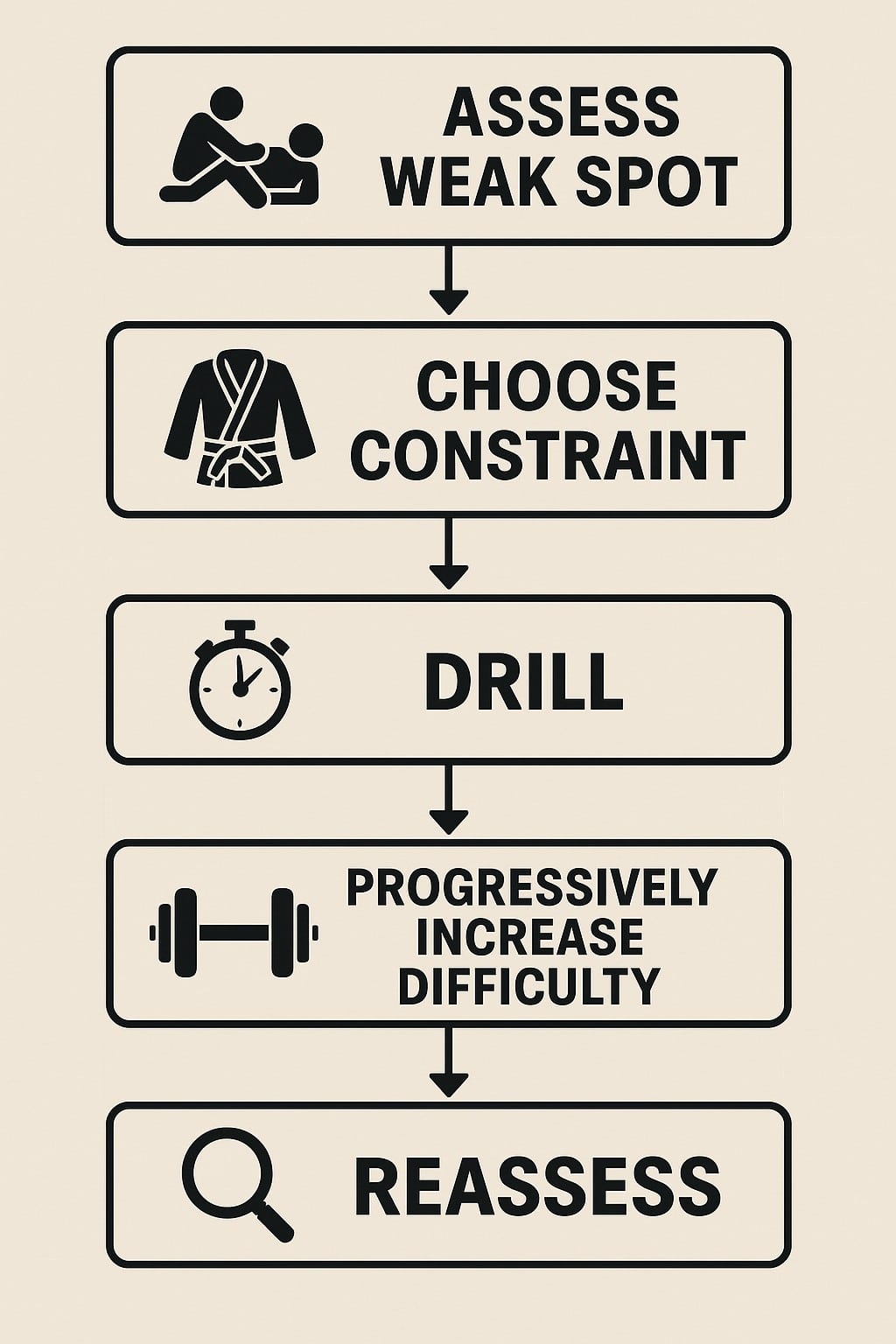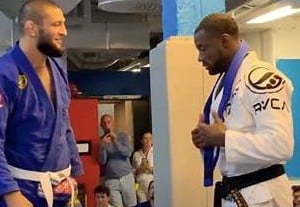Understanding the Role of Constraints in Skill Development
By introducing specific limitations or challenges during practice, constraint drills force you to confront the weakest aspects of your technique. This focused pressure reveals the gaps you might otherwise ignore in free rolling. Rather than replicating the chaos of live sparring, constraints isolate variables—position, grips, movement, timing—so you can systematically refine each element.
Identifying Holes in Your BJJ Game
Self-Assessment and Sparring Analysis
Record and review your rolling sessions to identify recurring issues: do you struggle to escape side control, or lose your posture during guard retention? Note the positions where you feel helpless and track submission attempts that consistently bypass your defense.
Partner Feedback and Instructor Insight
Ask training partners to point out patterns they exploit against you. Your coach can also highlight blind spots you may overlook under pressure.
Designing Constraint Drills to Address Weaknesses
Grip-Restricted Drills
If opponents frequently break your grips, experiment with no-gi or single-gi variations. Limiting your grip options forces adaptation and strengthens alternative control methods.
Positional Isolation
Confine sparring to specific scenarios—for example, starting every exchange in half-guard. This repetition hammers home the escapes, sweeps, and controls unique to that position.
Time-Limited Escapes
Set a countdown: you must escape the mount within 30 seconds or concede. The ticking clock heightens urgency, sharpening both technique and mental composure.
Implementing Progressive Constraint Games
Begin with mild restrictions and gradually increase difficulty. For instance, start guard drills with a loose rule set, then introduce time limits, and then eliminate sure grips. This progression mirrors the stages of skill acquisition, ensuring continuous growth without frustration.

Why Constraint Training Works
Constraint-based approaches leverage the principle of deliberate practice. By narrowing the focus to a specific challenge, your neural pathways adapt more rapidly, resulting in deeper motor learning and enhanced muscle memory. Unlike general drilling, these targeted games accelerate competence in areas that limit overall performance.
Linking to Past Insights About Constraint-Based Games
For a broader overview of constraint methods, see “Ecological Rolling.” To explore guard-specific constraints, check out “Guard Retention Masterclass: Advanced Strategies.”
Conclusion
By systematically identifying weaknesses and applying constraint drills tailored to those gaps, you can transform vulnerabilities into reliable tools. Embrace the challenge of constraint training, and watch your overall game reach new heights.




